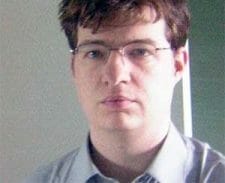
U.S.A. –(AmmoLand.com)- Two years ago, a study by University of Alabama professor Adam Lankford was released. The claim was very shocking: More guns led to more mass shooting taking place. As you might imagine, this study was picked up and run with by the likes of Michael Bloomberg and other anti-Second Amendment types.
Among the media outlets that reported on this study were Newsweek, the Los Angeles Times, Think Progress, Mother Jones, and Salon. The gist of the study was that the United States of America accounted for 31 percent of the mass shootings that take place around the world. Naturally, many who support gun bans, gun rationing schemes, and “universal background checks” touted the study.
No surprise there. The rare times that major semi-auto bans get rammed through occur when there is a very strong anti-gun majority and even then, they only can get the bill through when there has been a mass shooting, usually when people are overwhelmed with grief and shock in the immediate aftermath. When people have the time to rationally consider facts, they tend to reject gun control schemes.
As you might imagine, supporters of semi-auto bans (and other restrictions) have been trying to get some factual/scientific basis behind their agenda. It’s hard – in 2016, rifles of all types, not just the AR-15 that Bloomberg’s stooges want to ban, killed 374 people according to Justice Department statistics. That total is lower than those for knives, fists and feet (what the DOJ calls “personal weapons”), and clubs.
Recently, though, the First of all, Lankford’s study has been questioned by John Lott. But when the Washington Post took a look at Lott’s study, something else emerged: There was no clear definition of what constitutes a “mass shooting.” The Post’s fact-check on Lott and Lankford this year mentioned that some federal agencies defined an “active shooter” incident as one in which three or more people were shot.
According to a 2015 Congressional Research Service report, Congress issued a post-Newtown definition that involved at least three people being killed in the incident. But that report notes that the FBI has used a different definition over the years – saying that a mass killing involved four or more people killed in the same event, but it allowed for different locations in “close proximity.” Did you catch that little addition? So, the Congressional Research Service decided to define a mass shooting as “a multiple homicide incident in which four or more victims are murdered with firearms, within one event, and in one or more locations in close proximity.” They then also create the sub-category of “mass public shooting” by saying it’s a mass shooting that takes place in “one or more public locations, such as, a workplace, school, restaurant, house of worship, neighborhood, or other public setting.”
But even those definitions may not be complete. The Washington Post noted the 1998 school shooting at a high school near Springfield, Oregon (stopped by a NRA member’s sons, incidentally) had only two dead, but 25 wounded, but still felt like a mass shooting. And this now leads to something else that should be kept in mind when anti-Second Amendment types cite the Lankford study – something the Washington Post touched on.
The Post, while praising Lott’s transparency with his data set, did ask him to remove terrorist incidents from his list of 1,491 mass shootings. He did, and the results changed. The Post also noted that a third critic, who disputed Lott’s total of 43 incidents in the United States, claiming there were actually 188, used a different definition than Lott. Lankford, though, has never released his data, so we don’t know what shootings he has picked.
If we can’t agree on a definition of mass shooting, then we can’t really accurately say for sure how many take place. The best we can ask for, until we get a single standard to define these tragic occasions, is for researchers to be transparent. If you want to read Professor Lott’s study, go here. A total of 451 pages of backup data are here if you want to see the data for yourself.

About Harold Hutchison
Writer Harold Hutchison has more than a dozen years of experience covering military affairs, international events, U.S. politics and Second Amendment issues. Harold was consulting senior editor at Soldier of Fortune magazine and is the author of the novel Strike Group Reagan. He has also written for the Daily Caller, National Review, Patriot Post, Strategypage.com, and other national websites.
